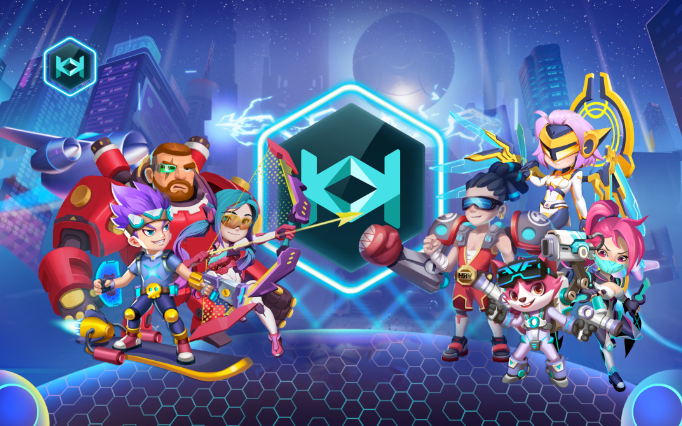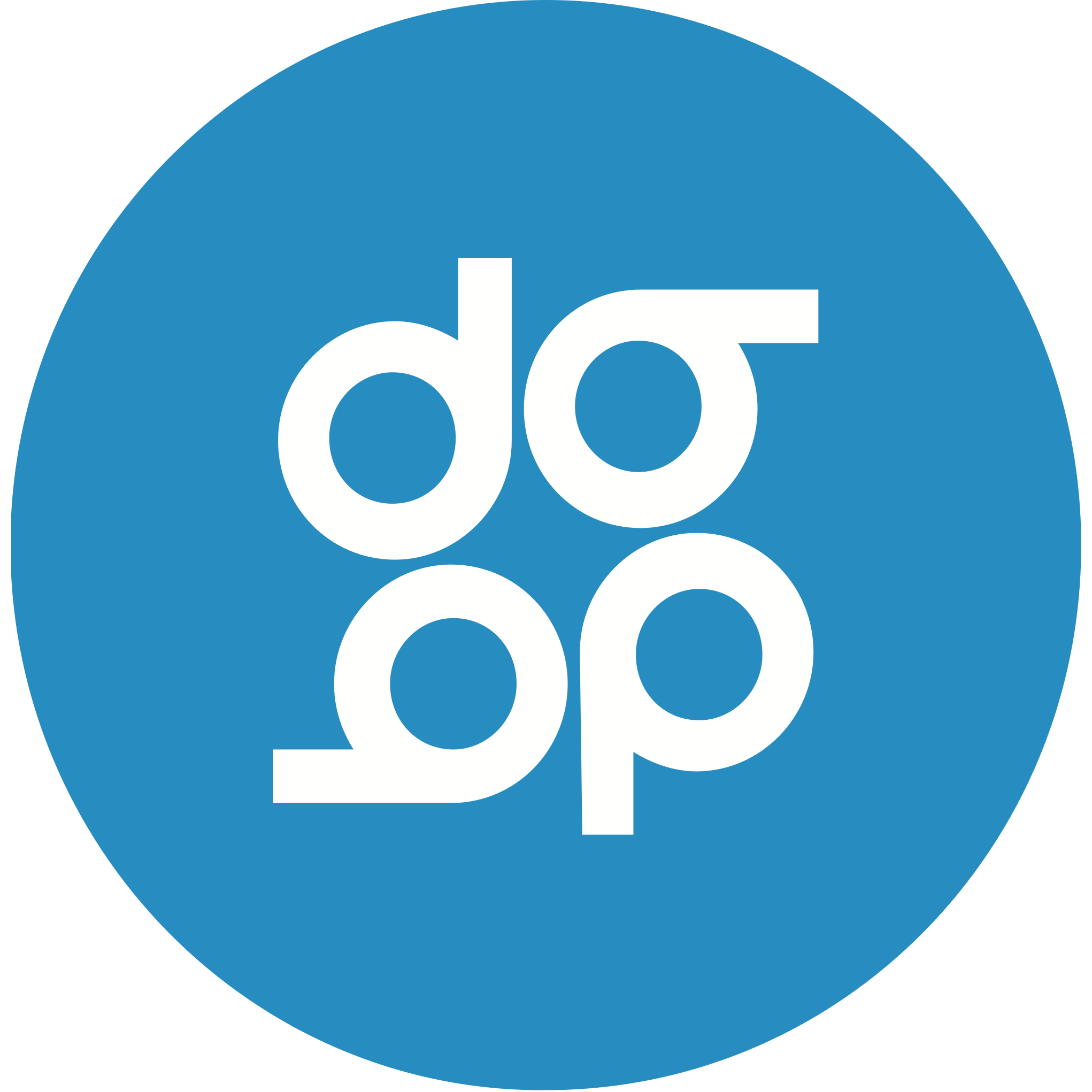
In the cryptocurrency market, as users demand higher asset efficiency, finding ways to generate more value from staked assets has become a hot industry topic. KernelDAO, as the cryptocurrency world’s first multi-chain restaking ecosystem, cleverly solves this problem through innovative restaking technology, allowing users to achieve a win-win situation of “liquidity + maximum returns” across multiple assets like ETH, BTC, and BNB.
With the introduction of the $KERNEL native token, the KernelDAO ecosystem will create a truly decentralized, self-sustaining liquidity cycle. This article will deeply analyze KernelDAO’s core features, $KERNEL’s tokenomics, and future development blueprint, giving you a comprehensive understanding of this innovative platform that is reshaping the crypto world.
Key Takeaways
- KernelDAO pioneers the first multi-chain restaking ecosystem, allowing users to maintain liquidity while maximizing returns across ETH, BTC, and BNB assets.
- The ecosystem features Kelp (ETH liquid restaking, $1.5B+ TVL), Kernel (BNB Chain restaking), and Gain (yield optimization vaults, $200M+).
- $KERNEL token (1 billion fixed supply) enables governance participation and utility across the ecosystem.
- The platform solves critical issues including the liquidity-yield tradeoff and fragmented multi-chain asset management.
- The Kernel Points system rewards deposits with daily allocations that qualify for $KERNEL airdrops.
- Competitive advantages include multi-chain support, non-custodial design, and integrations with 50+ DeFi protocols.
- 2025 roadmap highlights: expanding Gain vaults, BTC yield opportunities, and Real World Asset market entry.
What is KernelDAO ($KERNEL)? Introduction to the Multi-Chain Ecosystem
KernelDAO is a comprehensive multi-chain restaking ecosystem focused on providing restaking solutions for mainstream crypto assets such as ETH, BTC, and BNB. Through its three core products – Kelp, Kernel, and Gain – KernelDAO offers users a solution to “maximize returns while maintaining asset liquidity.”
$KERNEL is KernelDAO ecosystem’s native governance and utility token, designed to drive ecosystem incentives, governance participation, and liquidity provision. By holding $KERNEL, users can participate in shaping the future development of the KernelDAO protocol and benefit from its growth. As a core component of KernelDAO’s governance model, $KERNEL plays a crucial role in the ecosystem.
Currently, KernelDAO’s Kelp product has accumulated over $1.5 billion in Total Value Locked (TVL), its Gain vaults manage over $200 million in assets, and the Kernel infrastructure supports 25+ ecosystem projects, including liquid restaking tokens, middleware, and decentralized applications.
KernelDAO and Kernel Token: Understanding Their Relationship
The relationship between KernelDAO and $KERNEL can be simply understood as the relationship between a platform and its native token. KernelDAO is the entire protocol ecosystem, focused on providing multi-chain restaking services to users, enabling them to maximize returns while maintaining asset liquidity. It supports multiple asset types and provides comprehensive DeFi solutions.
$KERNEL is KernelDAO’s native token with the following key features:
- Serves as the core utility token of the ecosystem
- Drives ecosystem incentive mechanisms
- Allows holders to participate in protocol governance
- Supports restaking to provide shared economic security
Key Challenges in Crypto That KernelDAO’s Ecosystem Aims to Solve
1. Low efficiency of staked assets
In traditional staking and DeFi protocol environments, users’ assets can typically only generate returns on a single chain, resulting in low capital utilization efficiency. For example, if you stake ETH, that portion of assets cannot simultaneously work in the BTC or BNB ecosystems.
2. Trade-off between liquidity and returns
Crypto users often face a dilemma: either choose liquidity (assets that can be traded at any time) or high returns (locking assets for staking). Few solutions can provide both simultaneously.
3. Fragmented liquidity
As blockchain networks increase, user assets become dispersed across different networks, causing severely fragmented liquidity. Moving assets between different chains usually requires complex bridging processes, which are both time-consuming and carry security risks.
4. Unsustainable reward structures
Many DeFi projects offer high yields that are unsustainable, often leading to a brief surge in participation followed by rapid decline. There’s a lack of long-term alignment of interests between users and projects.
5. Complexity of multi-chain asset management
Users need to learn how to operate different blockchains, manage multiple wallets, and hold native tokens for each network to pay transaction fees, increasing usage barriers and management complexity.
The Evolution of KernelDAO: Founding Story and Development Milestones
KernelDAO initially focused on the Ethereum ecosystem, launching the Kelp liquid restaking solution to provide ETH holders with liquidity and additional returns. After successfully establishing a solid foundation on Ethereum, KernelDAO expanded to BNB Chain, developing the Kernel restaking protocol, further extending its multi-chain strategy.
Recently, KernelDAO completed its ecosystem with the introduction of Gain vaults, the third core component, providing users with automated reward and airdrop optimization strategies.
KernelDAO is in a rapid expansion phase, planning to continue extending its product line throughout 2025, launching more vault types, expanding support for bitcoin yields, and entering the Real World Assets (RWA) market. Additionally, the team plans to extend Kernel to new blockchains, realizing a truly multi-chain vision.
Today, KernelDAO has become a leading project in the restaking field, offering users unprecedented asset optimization opportunities through its innovative technology and comprehensive ecosystem.
Kelp, Kernel, and Gain: The Three Pillars of KernelDAO’s Ecosystem

1. Kelp – ETH liquid restaking platform
Kelp is a multi-chain liquid restaking platform with current Total Value Locked (TVL) exceeding $1.5 billion. The platform focuses on building liquid restaking solutions for the Ethereum network.
Through Kelp, users can:
- Restake ETH to EigenLayer and receive rsETH liquid tokens
- Continue earning staking and restaking rewards while maintaining asset liquidity
- Use rsETH in DeFi applications for lending, trading, and other operations
- Gain diversified income sources, including Ethereum network rewards and EigenLayer additional incentives
rsETH, as Kelp’s core liquid restaking token, has undergone comprehensive audits by industry leaders such as SigmaPrime and Code4rena, ensuring the protocol’s security and functionality.
2. Kernel – BNB Chain restaking infrastructure
Kernel is a restaking protocol running on BNB Chain that reimagines cryptoeconomic security. It allows BNB token holders to amplify the utility of their assets through a restaking mechanism.
Kernel’s features include:
- Support for direct BNB staking or participation through Liquid Staking Tokens (LSTs)
- Dynamic Validation Networks (DVNs) system, providing multi-service security guarantees
- Over 20 projects building on Kernel, including AI co-processors, decentralized oracles, and cross-chain bridges
- Creating solid security infrastructure for the BNB ecosystem
3. Gain – Multi-asset yield optimization vaults
Gain is KernelDAO’s latest product, designed specifically for restakers and users to help them maximize yield potential through multiple vaults.
Key features of Gain vaults:
- Smart contracts automating airdrop/reward farming strategies
- Non-custodial design, allowing users to withdraw assets at any time
- Providing liquid tokens (such as agETH/hgETH) for further DeFi access
- One-click deployment and significant gas fee savings
- Earning multiple L2 airdrops through a single diversified strategy
These three core products together form KernelDAO’s complete ecosystem, providing users with comprehensive multi-chain asset optimization solutions, covering major cryptocurrency asset classes from ETH to BNB to BTC.
KernelDAO’s Competitive Edge: Multi-Chain Restaking Advantages
1. Multi-chain asset support
KernelDAO is among the few platforms that simultaneously support multiple mainstream crypto assets like ETH, BTC, and BNB. This multi-asset support enables users to:
- Diversify investment risks across different blockchains
- Optimize yield strategies for multiple assets simultaneously
- Maintain liquidity and accessibility for all assets
2. Comprehensive ecosystem synergy
Through the collaborative work of its three core products, KernelDAO creates unique ecosystem value:
- Kelp’s rsETH can be further optimized for yield in Gain vaults
- BNB restaked on Kernel can earn Kernel Points, qualifying for $KERNEL airdrops
- Fund flows and interoperability between different product lines create higher capital efficiency
3. Non-custodial solutions
All KernelDAO products employ non-custodial designs, meaning:
- Users always retain control of their assets
- Assets can be withdrawn at any time without platform permission
- Enhanced security and reduced centralization risks
4. Advanced security measures
KernelDAO prioritizes security, protecting user assets through multiple measures:
- Comprehensive audits by renowned security teams like SigmaPrime and Code4rena
- Continuous smart contract reviews and testing
- Transparent protocol design and risk management strategies
5. Extensive DeFi integration
KernelDAO’s liquid tokens (such as rsETH and agETH) are integrated with over 50 DeFi protocols, allowing users to:
- Use these tokens on platforms like Pendle, Spectra, and Lyra
- Participate in DeFi activities such as lending, liquidity provision, and yield farming
- Further amplify the yield potential of their assets
6. User-friendly experience
KernelDAO is committed to simplifying the user experience:
- One-click deployment to multiple strategies
- Significant gas fee savings
- Automated yield optimization and reinvestment
- Intuitive user interface and comprehensive documentation
7. Sustainable incentive model
Unlike many short-term incentive projects, KernelDAO has designed a long-term sustainable incentive model:
- Seasonal airdrop plans rewarding long-term participants
- Loyalty bonus mechanisms encouraging continued participation
- Using protocol revenue for buybacks and ecosystem enhancement
$KERNEL tokenomics: Supply, Distribution, and Value Mechanisms

$KERNEL token is the core of the KernelDAO ecosystem, with its economic model carefully designed to ensure long-term value creation and fair distribution. Below is a detailed analysis of $KERNEL tokenomics:
Token supply and distribution
$KERNEL has a total supply of 1 billion tokens, a fixed amount that will not be increased. The token distribution plan is as follows:
- Community and ecosystem partners (60%):
- Community rewards and airdrops (55%): with 20% for multi-season airdrops, 35% for future ecosystem participation incentives
- Ecosystem partners (5%): for market making and on-chain liquidity initiatives
- Private sale (20%): for completed and upcoming strategic sales
- Team and advisors (20%): with a 24-month vesting period following a 6-month lock-up post-TGE
Kernel Points system
Kernel Points is a measurement system that rewards users based on their deposits in the Kernel ecosystem:
Basic conversion rate: 1 Kernel Point = 1 Kelp Grand Mile = 1000 Kelp Miles
Daily point allocation (based on deposit amounts):
- BNB deposits: 1 BNB = 2 Kernel Points per day
- BNB LST deposits: 1 BNB = 2.2 Kernel Points per day
- Bitcoin (BTC) deposits: 1 BTC = 260 Kernel Points per day
- rsETH deposits: 1 rsETH = 10 Kernel Points per day
Token value support mechanisms
$KERNEL token’s value is supported through several key mechanisms:
- Governance utility: Holders can participate in decision-making, influencing the protocol’s development direction
- Restaking incentives: Earning additional rewards by providing security
- Protocol revenue: Future protocol revenue can be used for $KERNEL token buybacks
- Insurance mechanism: The planned insurance layer requires $KERNEL staking, which will reduce circulating supply and increase demand
Utility and Function: How Kernel Token Powers the Ecosystem
1. Governance participation
$KERNEL holders can vote on key decisions in the KernelDAO ecosystem, including:
- Protocol upgrades and new feature development
- Fund allocation and strategic partnerships
- Future airdrops and reward plans
- Parameter adjustments for product lines (Kelp, Kernel, and Gain)
Governance power enables holders to directly influence the protocol’s development direction, ensuring it remains aligned with community interests.
2. Restaking security contribution
Users can restake $KERNEL to provide shared economic security for:
- The KernelDAO ecosystem
- Middleware services
- Decentralized applications
Through restaking, $KERNEL holders can earn additional rewards while supporting broader ecosystem security.
3. Multi-channel rewards
$KERNEL holders are eligible for various rewards:
- Staking rewards from partner protocols
- Earnings allocated from middleware services
- Future insurance mechanism rewards
- Liquidity provision rewards
These diversified income sources create value accumulation paths for long-term holders.
4. Liquidity provision
Users can provide $KERNEL liquidity on automated market makers (AMMs) and:
- Earn transaction fee shares
- Receive additional incentive rewards
- Promote the healthy development of the entire ecosystem
5. Future insurance mechanism
$KERNEL staking will support an insurance layer, protecting users from:
- Slashing events in rsETH (LRT)
- Security events in the Kernel protocol
This insurance function not only provides additional protection for users but also creates a new source of demand for $KERNEL.
6. Ecosystem participation
$KERNEL is the core transaction medium in the KernelDAO ecosystem, used for:
- Payments for products and services
- Facilitating cross-chain operations
- Participation in community activities
7. Cross-product functionality
$KERNEL integrates all of KernelDAO’s major products:
- In Kelp LRT: Supporting the protection of over $2 billion TVL in rsETH
- In Kernel infrastructure: Supporting 25+ ecosystem projects
- In Gain: Supporting tokenized reward vaults with over $200 million TVL
KernelDAO’s Roadmap: Expanding Gain Vaults and Kelp Integration in 2025
Q1 2025 – Expansion & Integration
- Strengthening DeFi utility: Launching three new vaults on Gain
- Ecosystem growth: Expanding DeFi integrations for rsETH
- Kernel platform development: Facilitating DVNs and Operators participation on Kernel
Q2 2025 – BTC yields & centralized exchange growth
- Bitcoin and centralized exchange integration:
- Enabling rsETH integration on centralized exchanges
- Launching BTC-focused vaults on Gain
- Kernel adoption: Driving DVN and Operator participation on Kernel
Q3 2025 – Real World Asset market entry
- Real world asset integration:
- Introducing Real World Asset (RWA) products on Gain
- Security and risk management:
- Implementing slashing mechanisms within Kernel, enhancing security
Q4 2025 – Multi-chain expansion
- Expanding RWA products: Scaling Real World Assets within Gain
- Multi-chain growth: Extending Kernel to new blockchains
Market Competitors and KernelDAO’s Unique Position in the Crypto Ecosystem
In the rapidly developing restaking and liquid staking field, KernelDAO faces competition from multiple directions but possesses unique advantages that set it apart.
Main competitors
- ETH restaking sector: EigenLayer native restaking, Renzo Protocol, and Puffer Finance
- BNB Chain staking sector: Traditional BNB validators and liquid staking providers
- Multi-chain yield aggregators: Yearn Finance and Convex Finance
- Airdrop mining platforms: Layer3 and Galxe
KernelDAO’s core advantages
Complete multi-chain ecosystem
Simultaneously supporting ETH, BTC, and BNB restaking, while competitors typically focus on a single chain
Strong market position
- Kelp LRT has accumulated over $1.5 billion in TVL
- Gain vaults manage over $200 million in assets
Extensive partnership network
- Integration with over 50 DeFi protocols
- 25+ projects building on Kernel infrastructure
Innovative product strategy
- Gain vaults offering one-click multi-airdrop optimization
- Pioneering BNB Chain restaking infrastructure
- Community-driven governance and sustainable reward mechanisms

How to Purchase Kernel Coin: Step-by-Step Guide
MEXC exchange is the preferred platform for purchasing $KERNEL. As a leading global cryptocurrency exchange, MEXC provides a secure and convenient trading environment. Here are the steps to buy:
MEXC trading platform purchase steps
- Register a MEXC account: Visit the MEXC official website, complete registration and KYC verification
- Deposit funds: Deposit USDT to your MEXC account
- Trade $KERNEL: Search and select the KERNEL/USDT trading pair, set quantity and price, confirm transaction
MEXC advantages
- High liquidity ensures fast order matching
- User-friendly interface suitable for all types of traders
- Comprehensive security measures protecting assets
- Professional customer support and competitive transaction rates
Summary
KernelDAO, as a pioneer in multi-chain restaking ecosystems, successfully balances asset liquidity and maximized yields through its three core products: Kelp, Kernel, and Gain. $KERNEL, as the ecosystem’s native token, not only supports governance functions but also connects the entire ecological network.
In this innovative ecosystem, users can restake assets such as ETH, BTC, and BNB, receive liquid tokens, and participate in various DeFi strategies. KernelDAO’s multi-chain approach allows assets on different blockchains to work together, significantly improving capital efficiency.
$KERNEL offers investors opportunities to participate in governance, earn yields, and join loyalty programs. Its carefully designed seasonal airdrop mechanism and tokenomics create a self-sustaining value cycle, promising long-term returns.
As KernelDAO executes its ambitious roadmap, including launching more vaults, expanding bitcoin support, developing real world asset products, and extending to new blockchains, $KERNEL has the potential to become an important token connecting the multi-chain DeFi world.
$KERNEL airdrop now live! Exclusive MEXC activity helps you capture multi-chain restaking benefits!
Interested in KernelDAO’s Kelp liquid restaking and Gain vaults? MEXC now brings you an exclusive $KERNEL airdrop campaign! Complete simple tasks to participate in this innovative platform reshaping the crypto world. Seize the opportunity, visit MEXC’s Airdrop+ page now to experience the multi-chain asset optimization solutions brought by KernelDAO and become a pioneer in the next generation of DeFi!
Join MEXC and Get up to $10,000 Bonus!



